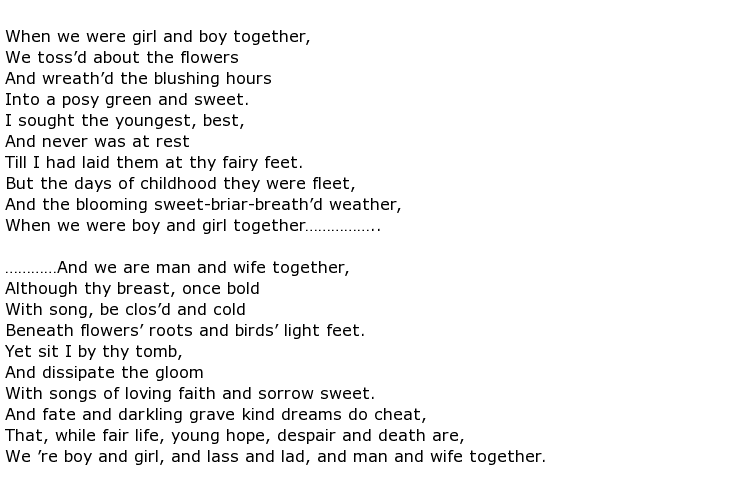 Thomas Lovell Beddoes was a curious character whose short life spanned the first half of the 19th century, thus causing him to be referred to, in some literary circles, as “the last Elizabethan” who might be distinguished from other writers of the time by the “quality of his expression”. He was a poet and dramatist and some have called him a great writer. Opinions are very much divided though on that particular description. It may have inspired him, or hindered him, but the fact that he was exposed, at a very young age, to his father’s morbid collection of anatomical paraphernalia most certainly gave him a deep interest in all things macabre.
Thomas Lovell Beddoes was a curious character whose short life spanned the first half of the 19th century, thus causing him to be referred to, in some literary circles, as “the last Elizabethan” who might be distinguished from other writers of the time by the “quality of his expression”. He was a poet and dramatist and some have called him a great writer. Opinions are very much divided though on that particular description. It may have inspired him, or hindered him, but the fact that he was exposed, at a very young age, to his father’s morbid collection of anatomical paraphernalia most certainly gave him a deep interest in all things macabre.
Beddoes was born on the 30th June 1803 into a fairly well off family who lived in the fashionable Bristol district of Clifton. His father, Dr Thomas Beddoes, was a somewhat controversial physician who filled the home with a range of items that you might normally find in an operating theatre. He died when Thomas was only 5 years old. Being surrounded by medical accoutrements and, probably, grisly exhibits, will have certainly influenced the thinking of a growing boy so it is hardly surprising that he grew up the way he did.
He was sent away to school in London at Charterhouse and then went up to Pembroke College, Oxford. At the age of 18 Beddoes published his first collection of poetry. The Improvisatore had very little impact but, the following year, he published a tragic play, in verse, called The Brides’ Tragedy (1822) and this received much critical acclaim. It has often been said that Thomas Beddoes was striving to recreate “the grandeur of Elizabethan verse-drama” but it seems that his outlook was a little too dark for any hope of success in that direction. He was constantly preoccupied with death and, in truth, never far from a state of madness.
Beddoes joined the London literary set in 1824 and had Mary Shelley and Thomas Jefferson Hogg as contemporaries. He also forged a lifelong friendship with a lawyer called Thomas Forbes Kelsall and, following the poet’s early death in 1849, it was Kelsall who took on the role of promoting his friend’s work. Collected Poems was published in 1851. Perhaps an example of his preoccupation with death is the poem The Ballad of Human Life. Here are the first and last verses:

Beddoes left the country to study medicine in northern Germany and, having fallen foul of the authorities there, tried his hand further south in Bavaria. Instead of concentrating on his anatomical studies he took to writing anti-establishment papers which riled his hosts and he was expelled from the kingdom in 1834. He crossed the Alps, into Switzerland, and this would be where he would remain for the rest of his days, apart from a couple of brief sojourns back in England. Having initially been in Zurich, when Beddoes returned to Switzerland it was, this time, to Basel. He had a brief homosexual dalliance with a man there who had ambitions to become an actor, and Beddoes tried his best to help him in that direction.
During his final visit to England he caused such outrage with his boorish behaviour and heavy drinking that everyone who knew him thought him quite mad. Returning to Basel he sunk into one depression after another and he made a failed attempt to commit suicide by cutting into a leg artery. This did, however, result in gangrene and a partial amputation.
Shortly after this incident though he was successful. He obtained enough quantities of the poison curari and killed himself with it.
Thomas Lovell Beddoes died in Basel on the 26th January 1849, aged 45.

